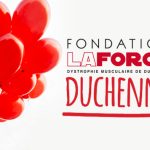
Did you know that February is Rare Disease Month?
February is Rare Disease Month
DMD is also a Zebra
Because it manifests itself only rarely, Duchenne muscular dystrophy (DMD) falls within the rare diseases category. It is also a treatment orphan learn more about DMD.
Since this is February, it seemed reasonable for us to tell you about it.
The zebra has been used as a symbol for rare diseases since about 1940. This comes from a quote by Dr. Theodore Woodward: “When you hear the sound of hooves behind you, do not expect to see a zebra.” This is the metaphor Dr. Woodward used to teach students basic concepts about the diagnosis of disease: when examining a patient’s symptoms, it’s better to think of a horse rather than a zebra. It’s a fact that horses are hoofed animals more commonly encountered than zebras, so you should automatically assume that if you hear the sound of hooves, it should be a horse, not a zebra, right?
Conversely, if we can’t confirm a common disease, it may be because it is a zebra, and continue the research among the approximately 7,000 known rare diseases. This inevitably results in very long diagnosis delays, along with a lot of consequences this entails.
A few distinctions
A rare disease is defined as a disease that affects less than 1 in 2000 (DMD affects 1 in 3500-5000, which makes it a rare disease).
The RQMO estimates that, in Québec, nearly one in 20 is afflicted by or carrier of a rare disease, for a total of almost 500,000 Quebecers. Many rare diseases are chronic, progressive and fatal. The CORD estimates approximately 3 million Canadians and their families face a debilitating disease that severely impacts their lives.
Nearly 75% of these diseases affect children, and about 80% of them are genetic.
A few examples of rare diseases: cystic fibrosis, Duchenne muscular dystrophy, Huntington’s disease, autoimmune myasthenia and Angelman Syndrome.
The term “orphan disease” is often confused with the word “rare disease” because the vast majority of rare diseases are orphans in many ways.
There are approximately 350 orphan drugs for about 7000 rare diseases.
A medical condition is referred to as an orphan disease if there is no treatment for the disease other than treating the symptoms, as is the case for DMD. For example, prednisone is a medication that affects the symptoms but not on the cause of the disease.
The rarity of these diseases creates obstacles and needs for afflicted people both in our health system and in society in general.
The Quebec Coalition for Orphan Diseases (RQMO) works to provide information and support to patients, their families, and healthcare professionals. Their website is full of relevant information, both for professionals and caregivers. Being rare, these diseases are often of little interest to researchers and organizations who fund research. The RQMO aims to advance knowledge about the various rare and orphan diseases by promoting exchanges between patients and researchers.
The Canadian Organization for Rare Disorders (CORD) is Canada’s national network for organizations representing all those with rare disorders. CORD provides a loud collective voice to advocate for health policy and a healthcare system that works for those with rare disorders. CORD works with governments, researchers, clinicians and industry to promote research, diagnosis, treatment, and services for all rare disorders in Canada.
February 28Th is the Rare Disease Day to raise awareness amongst the general public and decision-makers about rare diseases and their impact on patient’s lives.
We wish to emphasize that the information contained in this article come mainly from the RQMO website and the CORD website.
We thank them.



